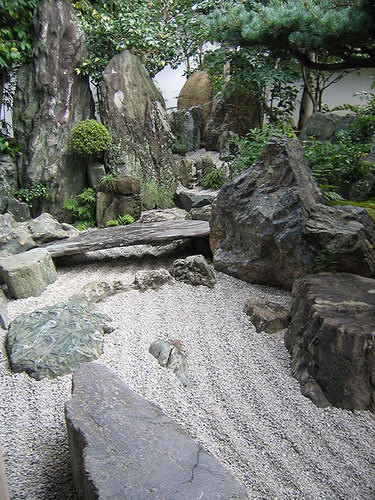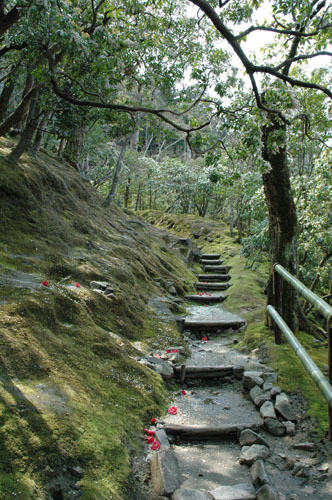
Paths
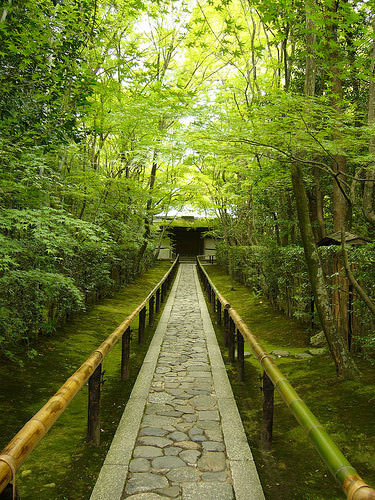
Stone Pavements (Ishidatami)
Garden passages paved with intricately combined stones were expressions of early Japanese gardening techniques. Stone paths connected the many buildings in temple districts and were often a visual focus of tea gardens. In later years, particularly during the Edo period, influenced by tea ceremony aesthetics and Zen, stone pavements became even more refined.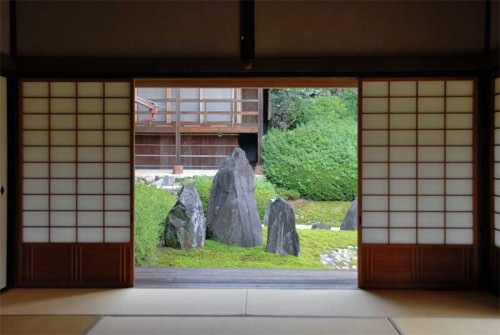
Buddhist Trinity Stones (Sanzon Iwagumi)
According to the Sajutei-ki, a guide to gardening principles written during the Heian period, one of the main features of a proper garden should be the arrangement of one large, upright stone flanked by two smaller stones of varying sizes. This trinity has Buddhist overtones, since the three stones can be likened to images of the Buddha supported by two Bodhisattvas as is often found in many Buddhist temples in Japan. Whether used for its religious overtones or not, however, this grouping of three stones is generally recognized as the most fundamental stone arrangement in Japanese gardens. There are two types of rock triads: a horizontal triad where the three rocks are arranged to form a triangle when viewed from above (hinbonseki) and a vertical triad where the rocks are arranged to form a triangle when viewed from the side (sanzanseki).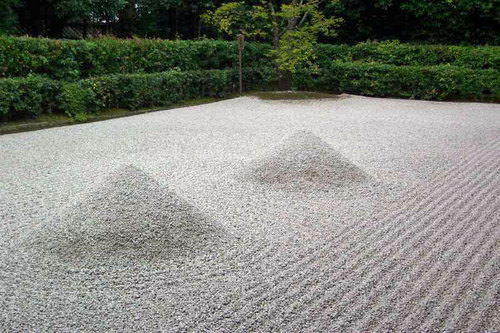
Sand Mounds
Ancient Japanese believed that all natural phenomenon were endowed with a spiritual force, and that huge rocks and mountain peaks were occupied by god-spirits that needed continuing homage, in the form of prayer and offerings. This animistic view of the world around them endured in the form of Shinto. Sand mounds or cones of sand in gardens are considered to be sacred sites where spirits live.